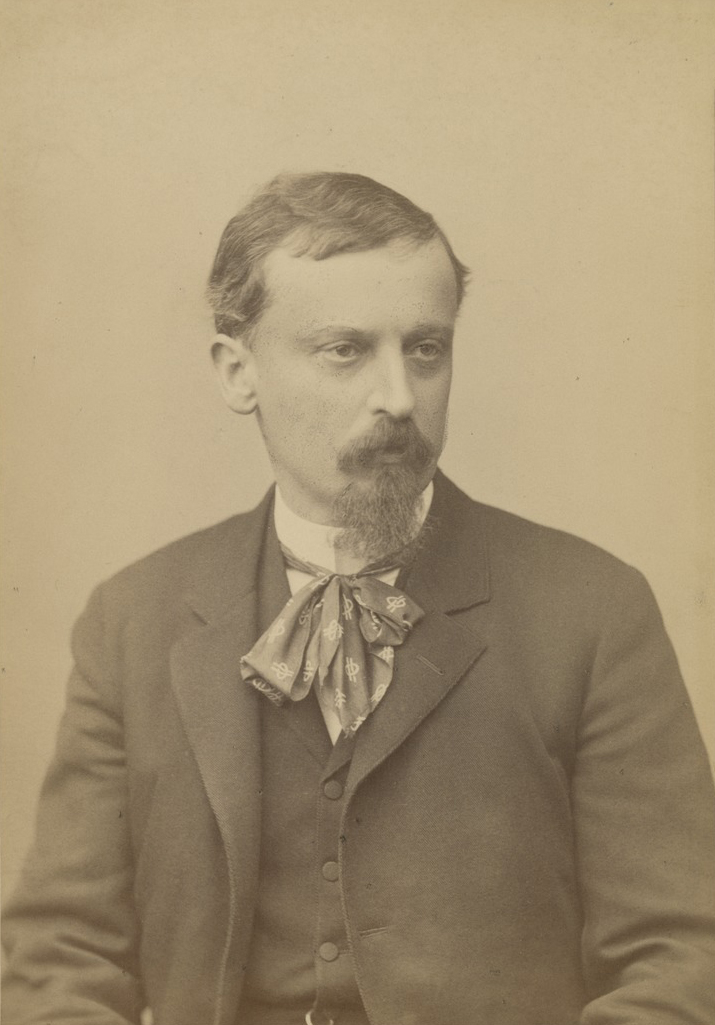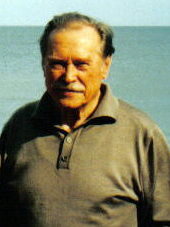|
The Knights Of The Cross
''The Knights of the Cross'' or ''The Teutonic Knights'' ( pl, Krzyżacy) is a 1900 historical novel written by the Polish Positivist writer and the 1905 Nobel laureate, Henryk Sienkiewicz. Its first English translation was published in the same year as the original. The book was serialized by the magazine ''Tygodnik Illustrowany'' between 1897–1899 before its first complete printed edition appeared in 1900. The book was first translated into English by Jeremiah Curtin, a contemporary of Henryk Sienkiewicz.Polish official site about translators of H. Sienkiewicz novels and short stories. ''Poland.gov.pl.'' Retrieved October 8, 2011. ''The Teutonic Knights'' had since been translated into 25 languages. It was the first book to be printed in Poland at the end ... [...More Info...] [...Related Items...] OR: [Wikipedia] [Google] [Baidu] |
Henryk Sienkiewicz
Henryk Adam Aleksander Pius Sienkiewicz ( , ; 5 May 1846 – 15 November 1916), also known by the pseudonym Litwos (), was a Polish writer, novelist, journalist and Nobel Prize laureate. He is best remembered for his historical novels, especially for his internationally known best-seller ''Quo Vadis'' (1896). Born into an impoverished Polish noble family in Russian-ruled Congress Poland, in the late 1860s he began publishing journalistic and literary pieces. In the late 1870s he traveled to the United States, sending back travel essays that won him popularity with Polish readers. In the 1880s he began serializing novels that further increased his popularity. He soon became one of the most popular Polish writers of the turn of the 19th and 20th centuries, and numerous translations gained him international renown, culminating in his receipt of the 1905 Nobel Prize in Literature for his "outstanding merits as an epic writer." Many of his novels remain in print. In Poland he is ... [...More Info...] [...Related Items...] OR: [Wikipedia] [Google] [Baidu] |
Russian Empire
The Russian Empire was an empire and the final period of the Russian monarchy from 1721 to 1917, ruling across large parts of Eurasia. It succeeded the Tsardom of Russia following the Treaty of Nystad, which ended the Great Northern War. The rise of the Russian Empire coincided with the decline of neighbouring rival powers: the Swedish Empire, the Polish–Lithuanian Commonwealth, Qajar Iran, the Ottoman Empire, and Qing China. It also held colonies in North America between 1799 and 1867. Covering an area of approximately , it remains the third-largest empire in history, surpassed only by the British Empire and the Mongol Empire; it ruled over a population of 125.6 million people per the 1897 Russian census, which was the only census carried out during the entire imperial period. Owing to its geographic extent across three continents at its peak, it featured great ethnic, linguistic, religious, and economic diversity. From the 10th–17th centuries, the land ... [...More Info...] [...Related Items...] OR: [Wikipedia] [Google] [Baidu] |
Lithuania
Lithuania (; lt, Lietuva ), officially the Republic of Lithuania ( lt, Lietuvos Respublika, links=no ), is a country in the Baltic region of Europe. It is one of three Baltic states and lies on the eastern shore of the Baltic Sea. Lithuania shares land borders with Latvia to the north, Belarus to the east and south, Poland to the south, and Russia to the southwest. It has a Maritime boundary, maritime border with Sweden to the west on the Baltic Sea. Lithuania covers an area of , with a population of 2.8 million. Its capital and largest city is Vilnius; other major cities are Kaunas and Klaipėda. Lithuanians belong to the ethno-linguistic group of the Balts and speak Lithuanian language, Lithuanian, one of only a few living Baltic languages. For millennia the southeastern shores of the Baltic Sea were inhabited by various Balts, Baltic tribes. In the 1230s, Lithuanian lands were united by Mindaugas, Monarchy of Lithuania, becoming king and founding the Kingdom of Lithuania ... [...More Info...] [...Related Items...] OR: [Wikipedia] [Google] [Baidu] |
Władysław II Jagiełło
Jogaila (; 1 June 1434), later Władysław II Jagiełło ()He is known under a number of names: lt, Jogaila Algirdaitis; pl, Władysław II Jagiełło; be, Jahajła (Ягайла). See also: Names and titles of Władysław II Jagiełło. was Grand Duke of Lithuania (1377–1434) and then King of Poland (1386–1434), first alongside his wife Jadwiga until 1399, and then sole ruler of Poland. Born a pagan, he converted to Catholicism in 1386 and was baptized as Władysław in Kraków, married the young Queen Jadwiga, and was crowned King of Poland as Władysław II Jagiełło. In 1387, he converted Lithuania to Catholicism. His own reign in Poland started in 1399, upon the death of Queen Jadwiga, lasted a further thirty-five years, and laid the foundation for the centuries-long Polish–Lithuanian union. He was a member of the Jagiellonian dynasty in Poland that bears his name and was previously also known as the Gediminid dynasty in the Grand Duchy of Lithuania. The dynast ... [...More Info...] [...Related Items...] OR: [Wikipedia] [Google] [Baidu] |
Emil Karewicz
Emil Karewicz (13 March 1923 – 18 March 2020) was a Polish actor. Early life His acting career began in Wilno, at the local theatre, where he played the role of a monkey in the "Quartet" by Ivan Krylov. During World War II he served in the Polish Army. He fought in the Battle of Berlin in 1945. Career After the war, he graduated from Iwo Gall Theatrical Studio (along with Ryszard Barycz, Bronisław Pawlik and Barbara Krafftówna). He played on stages in Łódź, mostly in the Jaracz Theatre and the New Theatre. Since 1962 he performed in Warsaw, in the Ateneum Theatre (''Teatr Ateneum im. Stefana Jaracza w Warszawie''), the Dramatic Theatre (''Teatr Dramatyczny w Warszawie''), and the New Theatre (''Teatr Nowy w Warszawie 1947-2005''). He retired in 1983. He died on 18 March 2020, five days after turning 97. Fame He earned popularity while performing roles of SS-Sturmbannführer Hermann Brunner in TV Series ''Stawka większa niż życie'' and SS-Obersturmführer in the ... [...More Info...] [...Related Items...] OR: [Wikipedia] [Google] [Baidu] |
History Of Poland In The Middle Ages
This article covers the history of Poland in the Middle Ages. This time covers roughly a millennium, from the 5th century to the 16th century. It is commonly dated from the Fall of the Western Roman Empire, and contrasted with a later Early Modern Period. The time during which the rise of humanism in the Italian Renaissance and the Reformation unfolded, are generally associated with the transition out of the Middle Ages, with European overseas expansion as a succeeding process, but such dates are approximate and based upon nuanced arguments. Early Middle Ages The first waves of Slavic migration settled the area of the upper Vistula River and elsewhere in the lands of present-day southeastern Poland and southern Masovia, coming from the upper and middle regions of the Dnieper River. Results of a genetic study by researchers from Gdańsk Medical University "support hypothesis placing the earliest known homeland of Slavs in the middle Dnieper basin". The West Slavs came primari ... [...More Info...] [...Related Items...] OR: [Wikipedia] [Google] [Baidu] |
Battle Of Grunwald
The Battle of Grunwald, Battle of Žalgiris or First Battle of Tannenberg was fought on 15 July 1410 during the Polish–Lithuanian–Teutonic War. The alliance of the Crown of the Kingdom of Poland and the Grand Duchy of Lithuania, led respectively by King Władysław II Jagiełło (Jogaila), who did not participate in the battle himself, and Grand Duke Vytautas, decisively defeated the German Teutonic Order, led by Grand Master Ulrich von Jungingen. Most of the Teutonic Order's leadership were killed or taken prisoner. Although defeated, the Teutonic Order withstood the subsequent siege of the Malbork Castle and suffered minimal territorial losses at the Peace of Thorn (1411), with other territorial disputes continuing until the Treaty of Melno in 1422. The order, however, never recovered their former power, and the financial burden of war reparations caused internal conflicts and an economic downturn in the lands controlled by them. The battle shifted the balance of pow ... [...More Info...] [...Related Items...] OR: [Wikipedia] [Google] [Baidu] |
Baltic Sea
The Baltic Sea is an arm of the Atlantic Ocean that is enclosed by Denmark, Estonia, Finland, Germany, Latvia, Lithuania, Poland, Russia, Sweden and the North and Central European Plain. The sea stretches from 53°N to 66°N latitude and from 10°E to 30°E longitude. A marginal sea of the Atlantic, with limited water exchange between the two water bodies, the Baltic Sea drains through the Danish Straits into the Kattegat by way of the Øresund, Great Belt and Little Belt. It includes the Gulf of Bothnia, the Bay of Bothnia, the Gulf of Finland, the Gulf of Riga and the Bay of Gdańsk. The " Baltic Proper" is bordered on its northern edge, at latitude 60°N, by Åland and the Gulf of Bothnia, on its northeastern edge by the Gulf of Finland, on its eastern edge by the Gulf of Riga, and in the west by the Swedish part of the southern Scandinavian Peninsula. The Baltic Sea is connected by artificial waterways to the White Sea via the White Sea–Baltic Canal and to the German ... [...More Info...] [...Related Items...] OR: [Wikipedia] [Google] [Baidu] |
Teutonic Knights
The Order of Brothers of the German House of Saint Mary in Jerusalem, commonly known as the Teutonic Order, is a Catholic religious institution founded as a military society in Acre, Kingdom of Jerusalem. It was formed to aid Christians on their pilgrimages to the Holy Land and to establish hospitals. Its members have commonly been known as the Teutonic Knights, having a small voluntary and mercenary military membership, serving as a crusading military order for the protection of Christians in the Holy Land and the Baltics during the Middle Ages. Purely religious since 1810, the Teutonic Order still confers limited honorary knighthoods. The Bailiwick of Utrecht of the Teutonic Order, a Protestant chivalric order, is descended from the same medieval military order and also continues to award knighthoods and perform charitable work. Name The name of the Order of Brothers of the German House of Saint Mary in Jerusalem is in german: Orden der Brüder vom Deutschen Haus der He ... [...More Info...] [...Related Items...] OR: [Wikipedia] [Google] [Baidu] |
State Of The Teutonic Order
The State of the Teutonic Order (german: Staat des Deutschen Ordens, ; la, Civitas Ordinis Theutonici; lt, Vokiečių ordino valstybė; pl, Państwo zakonu krzyżackiego), also called () or (), was a medieval Crusader state, located in Central Europe along the southeastern shore of the Baltic Sea. It was formed by the knights of the Teutonic Order during the 13th century Northern Crusades in the region of Prussia. The Livonian Brothers of the Sword merged in 1237 with the Teutonic Order of Prussia and became known as its branch, the Livonian Order, while their state (''Terra Mariana'') became a part of the Teutonic Order State. At its greatest territorial extent, in the early 15th century, it encompassed Chełmno Land, Courland, Gotland, Livonia, Neumark, Pomerelia (Gdańsk Pomerania), Prussia and Samogitia, i.e. territories nowadays located in Estonia, Latvia, Lithuania, Germany, Poland, Russia, and Sweden. Following the battles of Grunwald in 1410 and Wilkomierz in 1435 ... [...More Info...] [...Related Items...] OR: [Wikipedia] [Google] [Baidu] |



.jpg)



